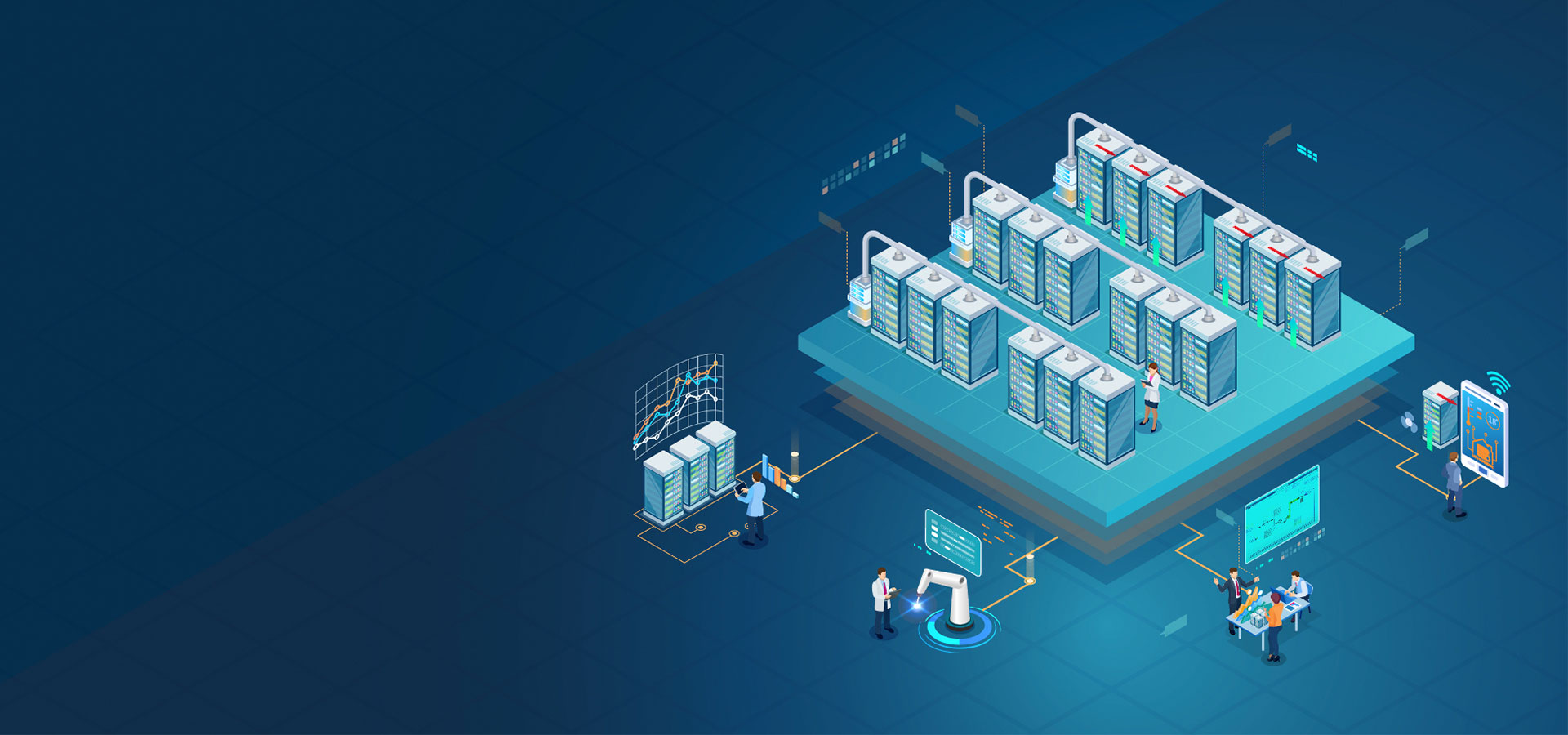Data Centers: The Greenprint for Better Energy Efficiency
Leverage the virtual twin experience to optimize all sustainable data center innovation strategies and achieve energy-efficient outcomes.
Why is Data Center Optimization Essential?
Data center optimization is crucial for several reasons. It improves energy efficiency, reducing electricity consumption and greenhouse gas emissions, which lowers operational costs and minimizes environmental impact. By optimizing resources, companies also achieve significant cost reductions, including savings on power, cooling, and maintenance.
It ensures peak performance, enabling data centers to operate with minimal downtime and maximum efficiency, crucial for business continuity. Optimized data centers can scale efficiently to meet growing demands, such as:
- comply with environmental regulations,
- support sustainability goals,
- enhance security,
- provide a competitive advantage by offering faster, more reliable services.
Reducing the Environmental Impact of Data Centers with Energy-Efficient Solutions
As the world becomes increasingly digital, the growth of data centers and data processing continues, resulting in a staggering projected data creation of 175 zettabytes1 by 2025. However, with this growth comes a significant environmental impact as energy usage and greenhouse gas emissions (GHG) continue to rise. Data centers account for around 1.5% of global electricity use and 1% of energy-related GHG emissions2.
To mitigate this impact, data center owner-operators, contractors, and builders must adopt renewable energy sources and energy-efficient equipment to reduce their carbon footprint and waste. By leveraging the virtual twin experience on the 3DEXPERIENCE® platform, stakeholders can develop and operate more energy-saving and environmentally friendly data centers.
Discover how to bring these data centers to life below.
Virtual Twins Boosting Data Center Efficiency
Leveraging Advanced Technology to Marry Data Center Performance and Sustainability.
Key Benefits of Data Center Energy Management
Energy-efficient Data Centers: Three Key Development Areas
Here are three ways the virtual twin experience and the 3DEXPERIENCE platform can optimize sustainable data center development.
1. Engineering and IT Efficiency Management
To evaluate and manage engineering and IT efficiency in data centers, stakeholders must work on power use effectiveness (PUE). To do so, they must first:
a. Optimize the energy efficiency of cooling systems with engineering efficiency
Stakeholders can leverage the virtual twin experience to model and simulate compute systems, not to mention their energy supply and cooling infrastructure. This way, they can maximize energy efficiency through improved heat, liquid, cooling water and airflow management.
b. Effectively reduce IT equipment's energy consumption
It is easier to increase IT equipment's performance while reducing energy consumption – with IT efficiency powered by Dassault Systèmes' virtual twin experiences and IBM's asset management, IoT platform and environmental intelligence suite.
2. Sustainable construction
With complete supply chain visibility on a common collaboration platform, stakeholders can deploy a sustainable construction strategy that includes generative design, systems performance analysis, efficient transportation and logistics, and waste management.
Curious about how it all works? Explore a virtual twin-powered, four-step sustainable construction plan in the infographic below.
3. Modularity
On the 3DEXPERIENCE platform, owner-operators can easily define, design and manufacture data center modules off-site before on-site installation. As such, they can increase the quality of these modules while reducing installation waste and errors.
Owner-operators can also leverage the platform's systems engineering and simulation capabilities to deliver multiple design alternatives with efficient and sustainable configurations.
1Source: “World Energy Transitions” by Irena
2Source: “Global Hydrogen Review 2022” by IEA
Frequently Asked Questions About Data Center Optimization Strategies
Related Content
Decarbonizing Industry Operations
Through digital transformation, industries can rethink their operations, from product design to supply chains, and move toward more sustainable, resource-efficient processes.
High-Tech Sustainability Reimagined
How to increase the sustainability of high-tech products encompassing design, production and use.
Unlocking Data Center Efficiency
The Virtual Twin is revolutionizing data center infrastructure by enabling accelerated configure-to-order solutions through intelligent modeling, real-time optimization and value chain collaboration.
Realize Climate Neutrality Across Your Value Chain
Climate neutrality involves reaching a state where human-caused greenhouse gas emissions are offset by natural absorption.
